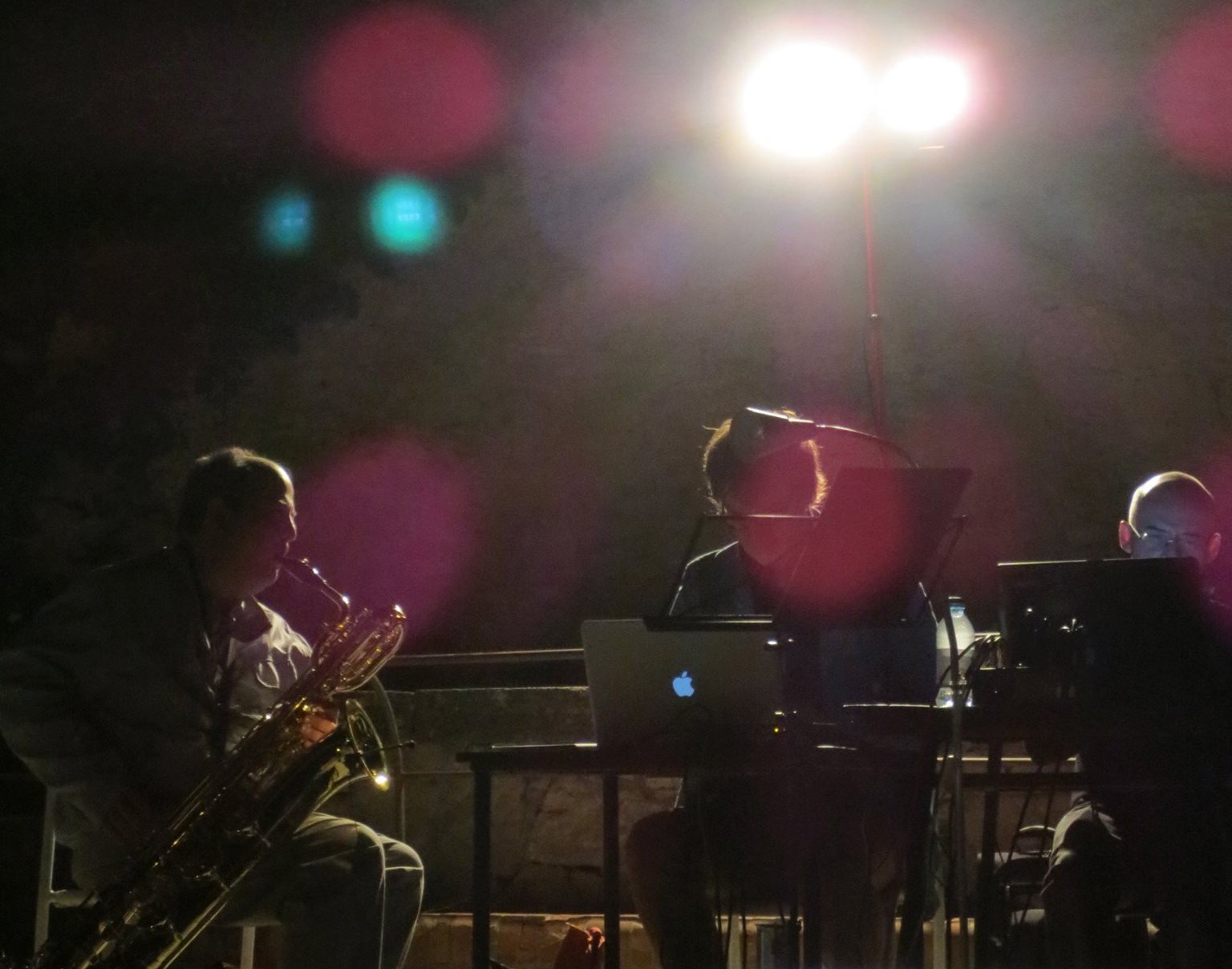Gianpaolo Antongirolami and I premiered my new piece for baritone saxophone and computer their faces on fire in San Marino on June 20th 2014. It’s 100% algorithmically generated, and allows the musician to configure various parameters of the algorithms via a MaxMSP interface:
Here’s the programme note:
“their faces on fire” is a flexible, musician-tweaked algorithmic composition for baritone saxophone and computer. The objective of the approach is the algorithmic specification of the global structure, parameters, tendencies, data, and data processing techniques for a composition, with the configuration of the open parameter space made by the musician from a series of limited choices. This leads to different versions of the piece—some easier than others perhaps—but with an identifiable character common to all. For instance, the saxophone part will always consist of a three-in-one contrapuntal texture created by leaps between three different registers: low, “harmonic”, and high (altissimo), but the order of these can be chosen by the musician.
The title comes from Samuel Beckett’s “First Love” (1945): “Wherever nauseated time has dropped a nice fat turd you will find our patriots, sniffing it up on all fours, their faces on fire.”
One thing I love about this and similar works—especially the audience’s various reactions to such passages when they’re performed—is the jarring juxtaposition of such scatological imagery against the more palatable diversions within. In other words, such sentences create a spicy shock that can awaken you from the more uniform flow of prose surrounding them. Musical parallels to this have been an underlying concern of mine for years; moreover, the specific import of this quotation is, in my opinion, always worth highlighting.
This is the first piece I’ve made with Arshia Cont’s/IRCAM’s score following software antescofo. I extended my slippery chicken software to generate the antescofo score file for this. I wanted it to be deliberately punchy, rhythmically, in order to test synchronisation, etc. So I purposely left my usual workflow and chose to work in a MIDI-sequencer fashion, with a sampler I programmed in MaxMSP. It was great fun.
Both Gianpaolo and I really enjoyed the flexibility this performance approach gave us. We found that Gianpaolo could stretch out rests as much as he wanted and the score following software coped really well, on the whole, triggering events bang on time at the next synchronisation point.
Gianpaolo and I did a short studio recording after the performance. Here’s the rough mix:

Leave a Reply